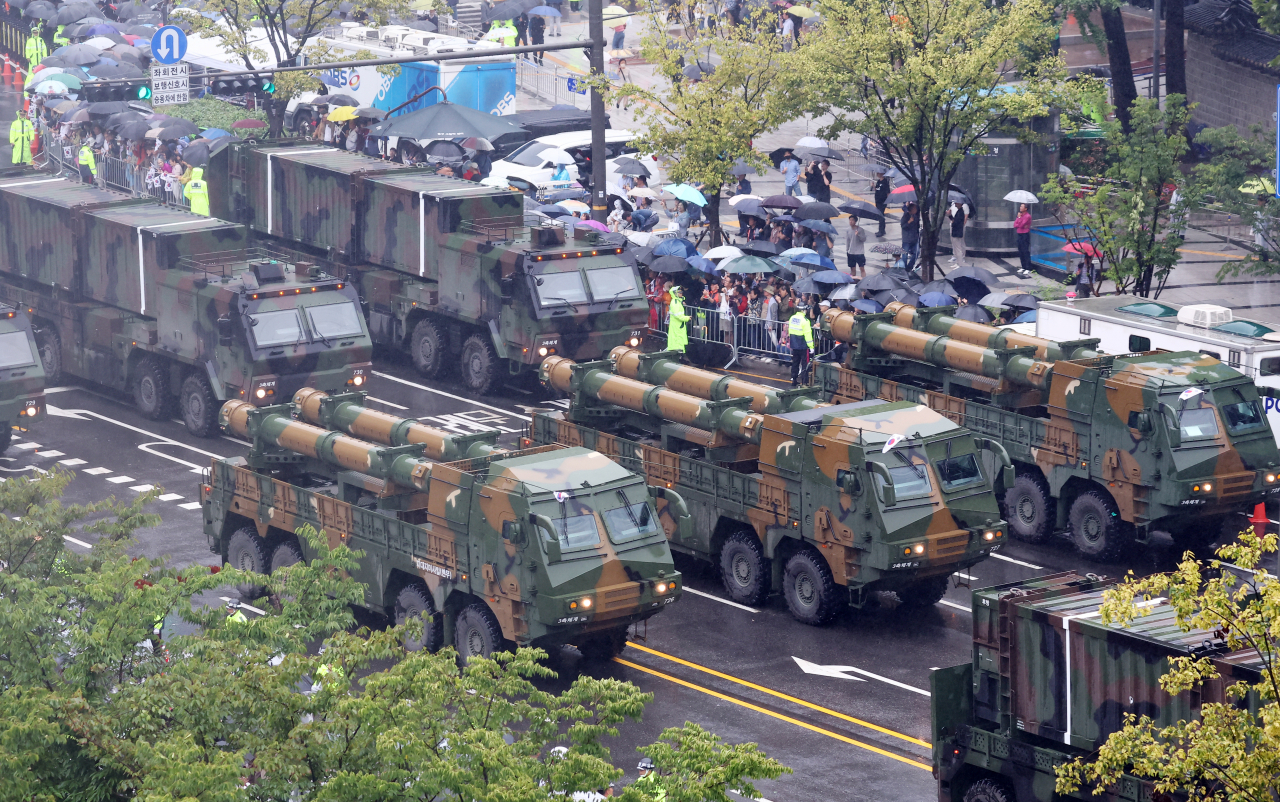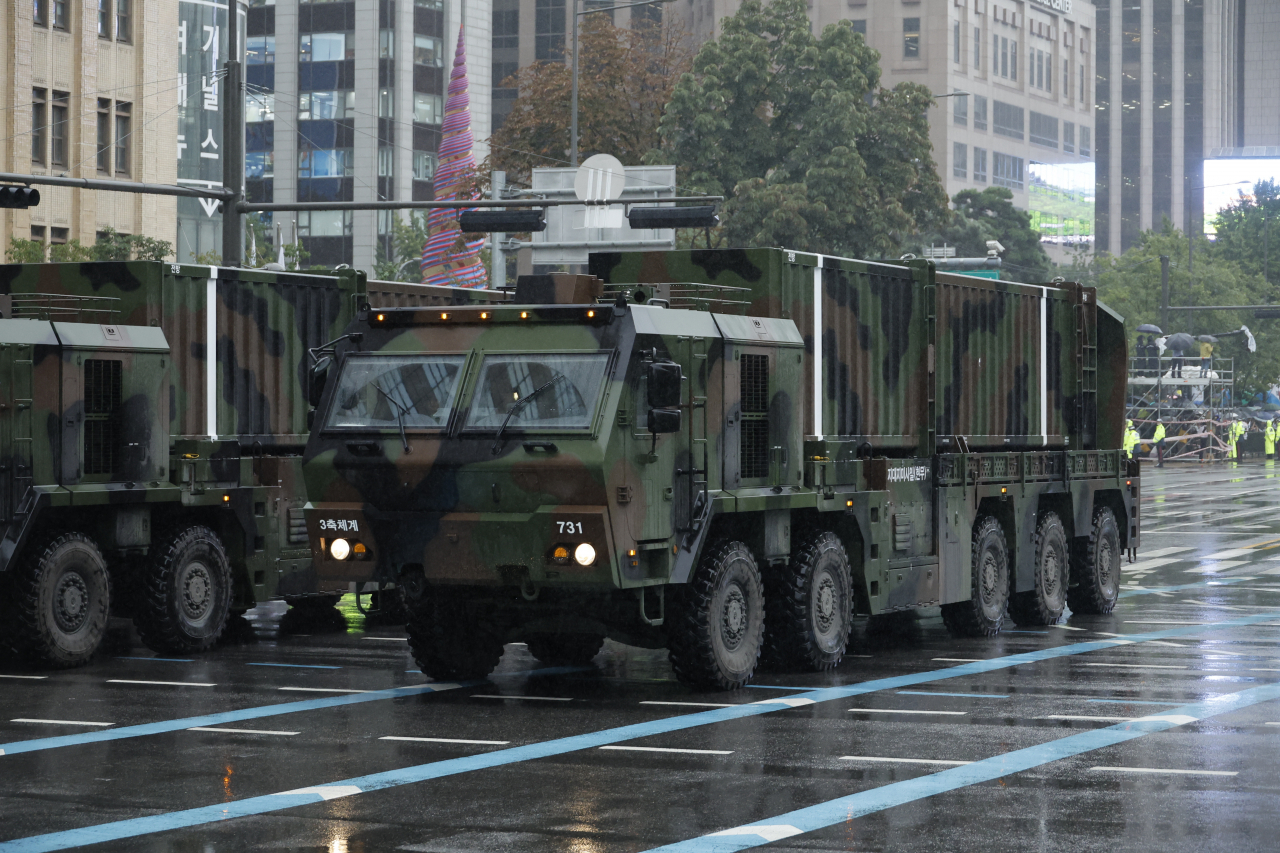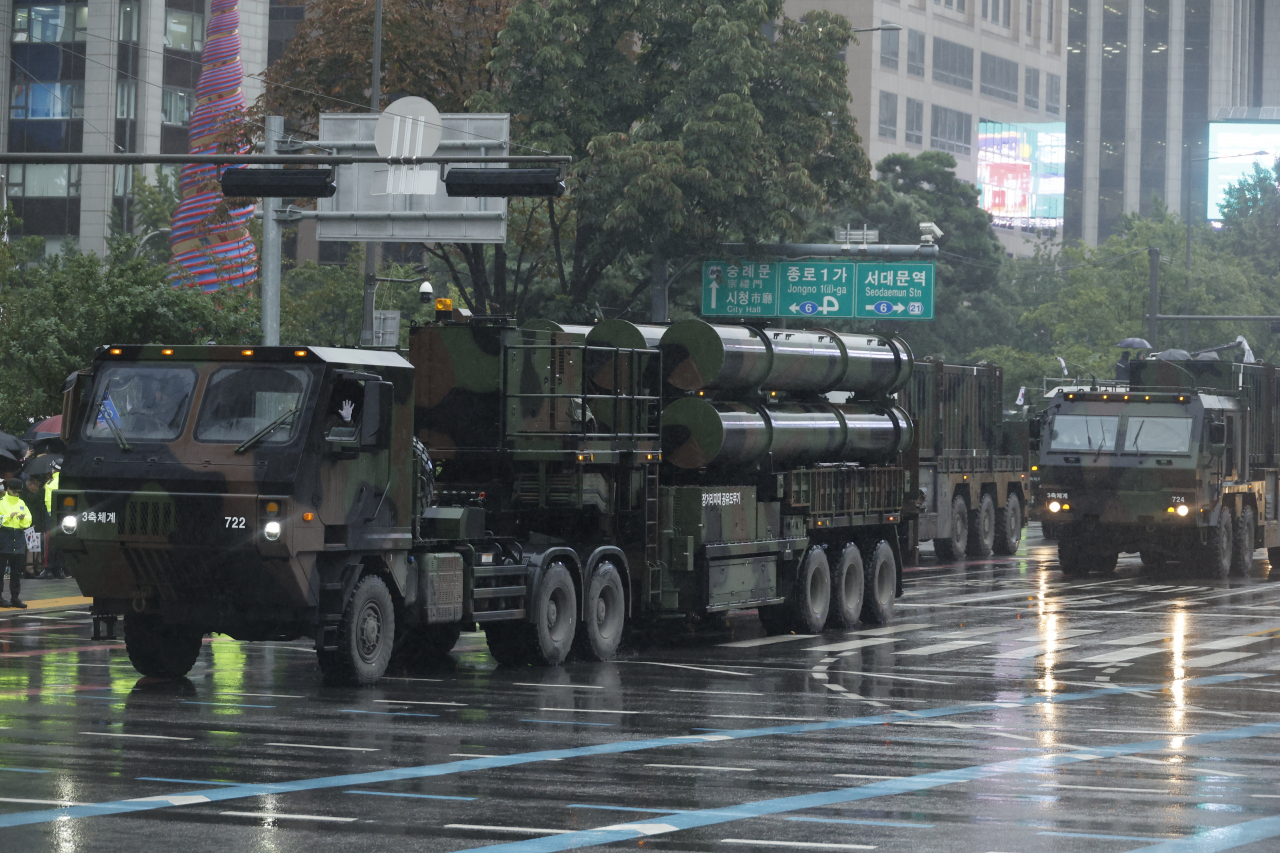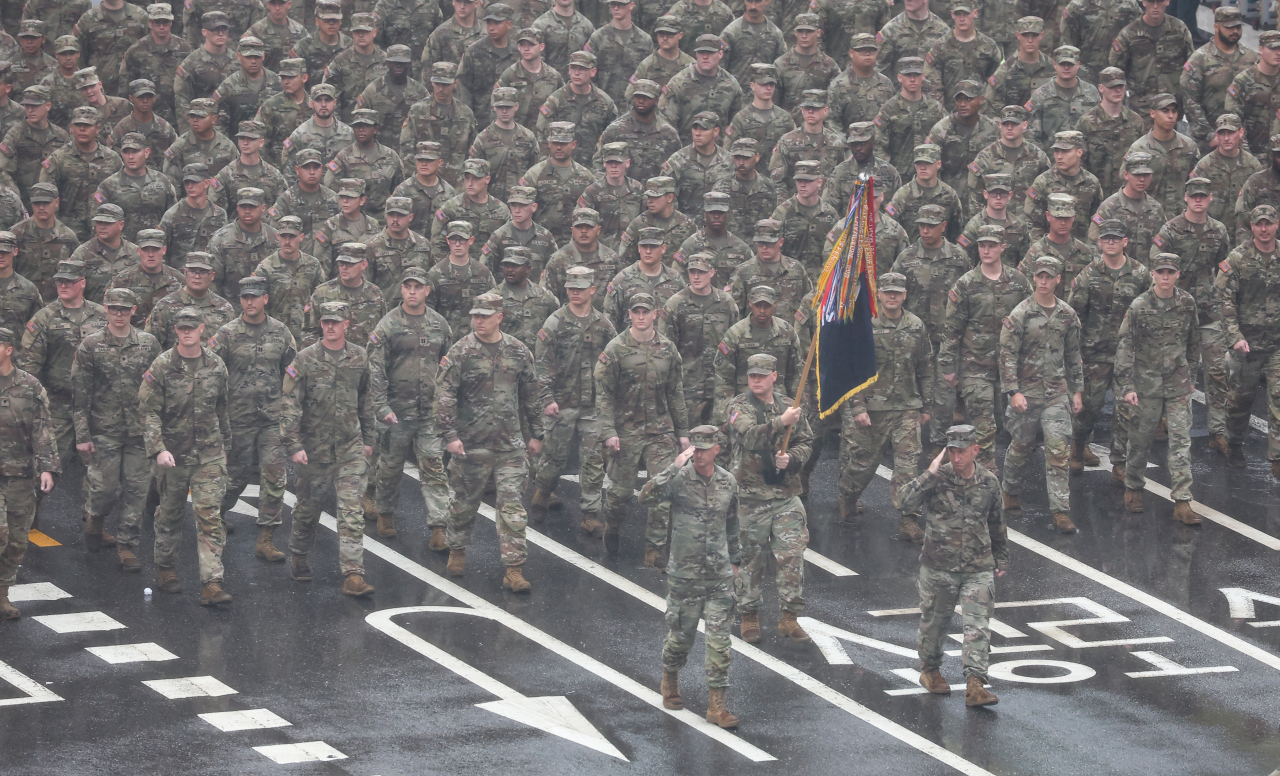S. Korea holds rare military parade, warns NK against nuclear attack
US Forces Korea also participate in street parade for 1st time to highlight 'ironclad' alliance
Published : 2023-09-26 14:50:12

The South Korean military showcased an array of domestically produced advanced weaponry in a rare, large-scale military parade in downtown Seoul on Tuesday, with its commander-in-chief warning North Korea of the collapse of the Kim Jong-un regime in the case of a nuclear attack against the South.
In commemoration of the 75th anniversary of Armed Forces Day, observed each year on Oct. 1, South Korea demonstrated its robust conventional military capabilities, serving as a resolute message to North Korea amid its increased nuclear threats.
This high-profile military street parade, the first in a decade, was staged hours after President Yoon Suk Yeol issued a stern warning to North Korea during a military inspection ceremony.
"If North Korea uses nuclear weapons, its regime will be brought to an end by an overwhelming response from the ROK-US alliance," Yoon said in his speech at Seoul Air Base, referring to South Korea by the acronym of its official name, the Republic of Korea.

Yoon underscored that North Korea's continued development of nuclear and missile capabilities and blatant nuclear saber-rattling "constitute an existential threat" to the South Korean populace and a "grave challenge to world peace."
"The North Korean regime must clearly realize that nuclear weapons will never be able to guarantee its security," Yoon said. "Based on battle-ready combat capabilities and a solid readiness posture, our military will immediately retaliate against any North Korean provocation."
Yoon reiterated the imperative of bolstering a proficient military as a cornerstone for upholding peace on the Korean Peninsula -- a peace that was shattered during the 1950-53 Korean War, initiated by the invasion of North Korea.
"We have learned from history that only a strong military can guarantee true peace."

From Hyunmoo to Ageis destroyer
After the inspection ceremony, the weapons embarked on their procession, commencing their journey from Seoul Air Base, and moving forward toward Seoul's Namdaemun, also known as Sungnyemun Gate, all while being observed by the public. The procession reached its climax at Gwanhawmun Square in the heart of Seoul, concluding a grand parade that covered a distance of 1.2 kilometers.
An extensive array of weapons, integral to South Korea's defense strategy aimed at safeguarding its citizens from the existential threats posed by nuclear-armed North Korea and ensuring a swift and determined response in the event of an attack, took center stage in the capital city.
Despite the rainy weather, President Yoon, along with citizens and foreign delegates, convened to witness the military street parade.
The "high-power" Hyunmoo ballistic missile, a domestically developed bunker buster designed to penetrate heavily fortified or deeply buried targets with massive destructive power, notably made its first debut in central Seoul, surrounded by a crowd of spectators.
While the high-power Hyunmoo's specifications, including the name and weight of its warhead, remain undisclosed. The missile plays a crucial role in the implementation of the Korea Massive Punishment and Retaliation strategy in case of attacks by North Korea.

The military street parade also featured a diverse range of other weaponry, including other homegrown missiles and interceptors, forming the cornerstone of South Korea's comprehensive three-pronged defense system. This system is specifically tailored to deter and respond to escalating missile and nuclear threats posed by North Korea.
The three-axis defense system encompasses the Kill Chain preemptive strike mechanism, Korea Air and Missile Defense, with its aim to construct intricate and multi-layered missile defense shields, and the KMPR.
The homegrown long-range surface-to-air missile, commonly referred to as the L-SAM interceptor, also made its public appearance during the outdoor parade. The sophisticated weapon is specifically designed to neutralize incoming enemy missiles at high altitudes, akin to the US-made THAAD anti-missile battery.
The domestically developed Cheongung medium-range surface-to-air missiles for interception at altitudes of 40 kilometers or lower were also displayed.

The military street parade also showcased integrated capabilities by bringing together key assets from the Army, Navy, Air Force, and Marine Corps.
The military street parade featured a naval ship for the first time. The South Korean Navy's inaugural 8200-ton Aegis-equipped destroyer, Jeongjo the Great, took part in the military parade, employing Augmented Reality, or AR technology for its presentation. Live footage of the destroyer Jeongjo the Great was broadcast and displayed on large screens arranged in the Gwanghwamun area.
A diverse array of unmanned aerial vehicles, or UAVs designed for purposes such as reconnaissance, attacks, and UAVs featuring stealth capabilities were showcased during the military parade.

South Korea's K-2 Black Panther main battle tanks, renowned for their global performance, having been exported to Poland, took the spotlight alongside the K-21 infantry fighting vehicles, which boast the capability to neutralize enemy armored vehicles, helicopters and light tanks.
Furthermore, 230 mm-caliber Chunmoo multiple rocket launchers, with the ability to cover the expanse of three football fields in a single volley, made a striking appearance during the street parade to celebrate Armed Forces Day.
Another notable highlight was the first-ever participation of approximately 300 service members from the US Forces Korea, including personnel from the US Eighth Army, in the military street parade.
This joint march underscores the steadfast combined defense posture, a notable departure from previous military parades, which traditionally featured the presence of the UN Honor Guard and the US military band, according to the Defense Ministry.

The military street parade had traditionally occurred every five years under previous South Korean administrations regardless of political inclination, with the notable exception of the Moon Jae-in government. During his tenure, the military street parade was not held, reflecting a commitment to reconciliation efforts with North Korea.
However, under the conservative Yoon government, the military street parade made its return after a decade-long hiatus, with the previous one having been held in 2013.
The 75th anniversary of Armed Forces Day was observed under the theme of "strengthened armed forces, robust security and peace through strength," highlighting the enduring challenges presented by North Korea's saber-rattling against South Korea, according to South Korea's Defense Ministry.
The events were meticulously planned to "underscore the unwavering resolve of the armed forces in safeguarding the country and convey the message to North Korea that it possesses the capability to deter enemy provocations and punish with overwhelming force.”
http://www.koreaherald.com/common/newsprint.php?ud=20230926000522